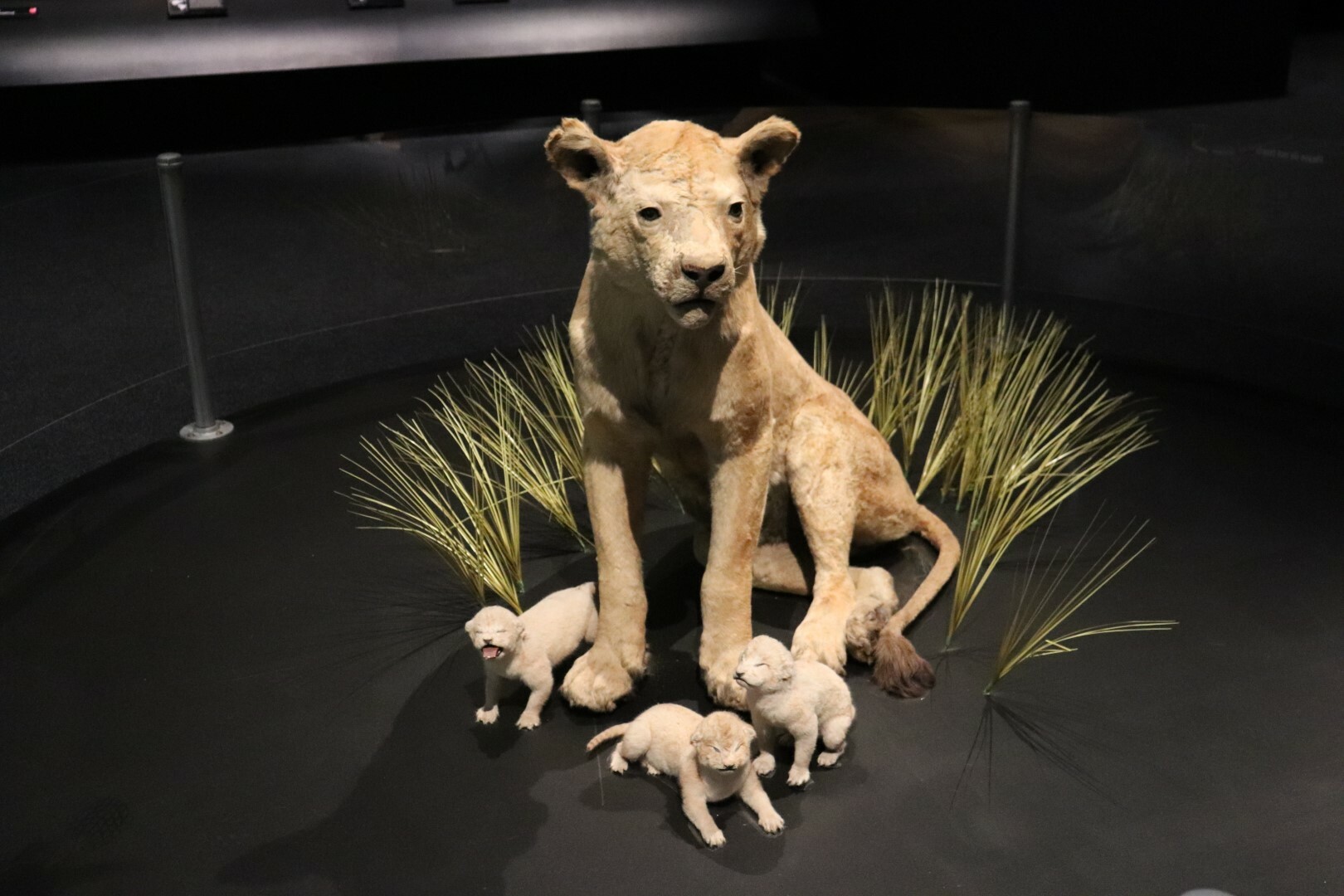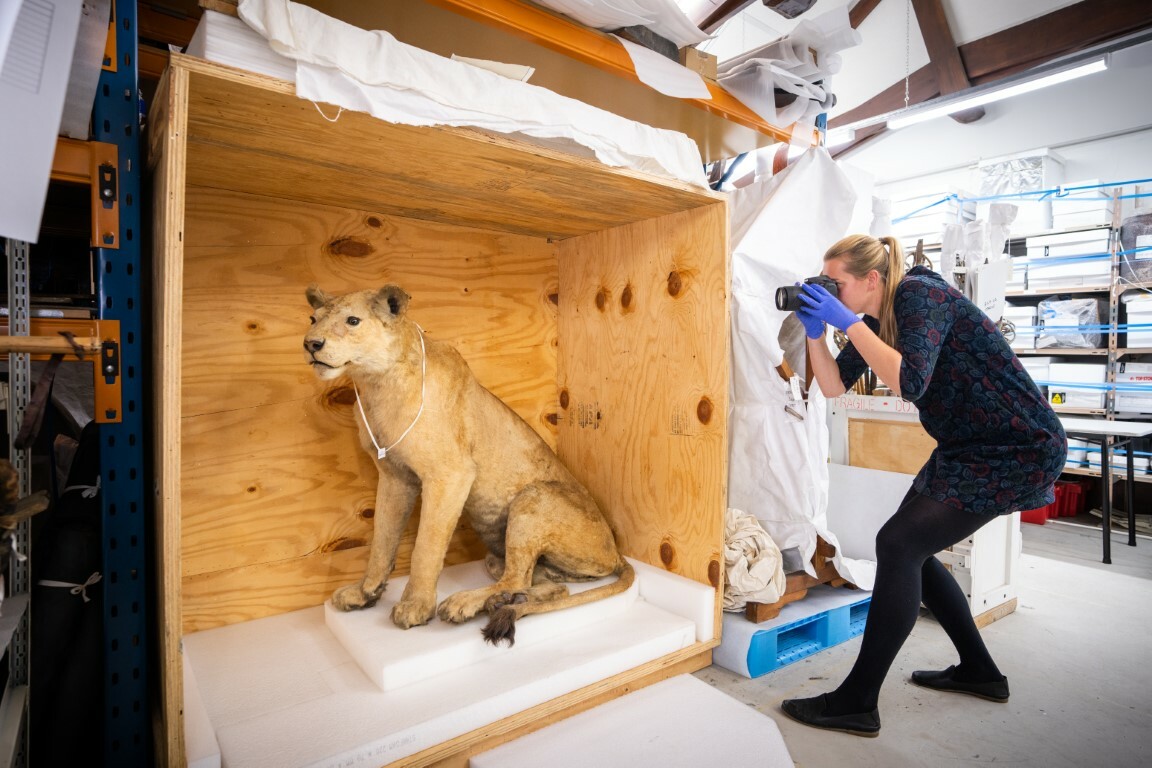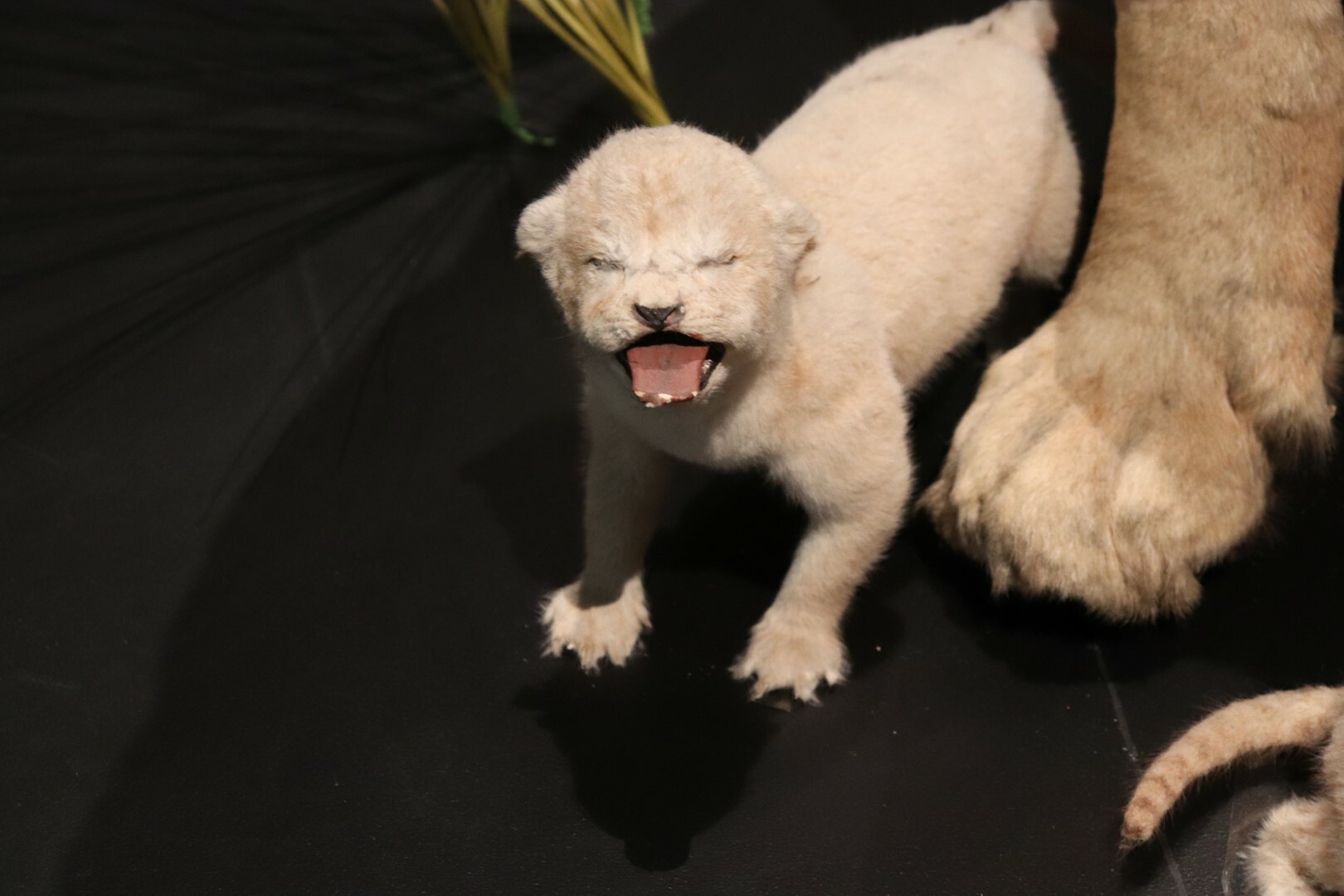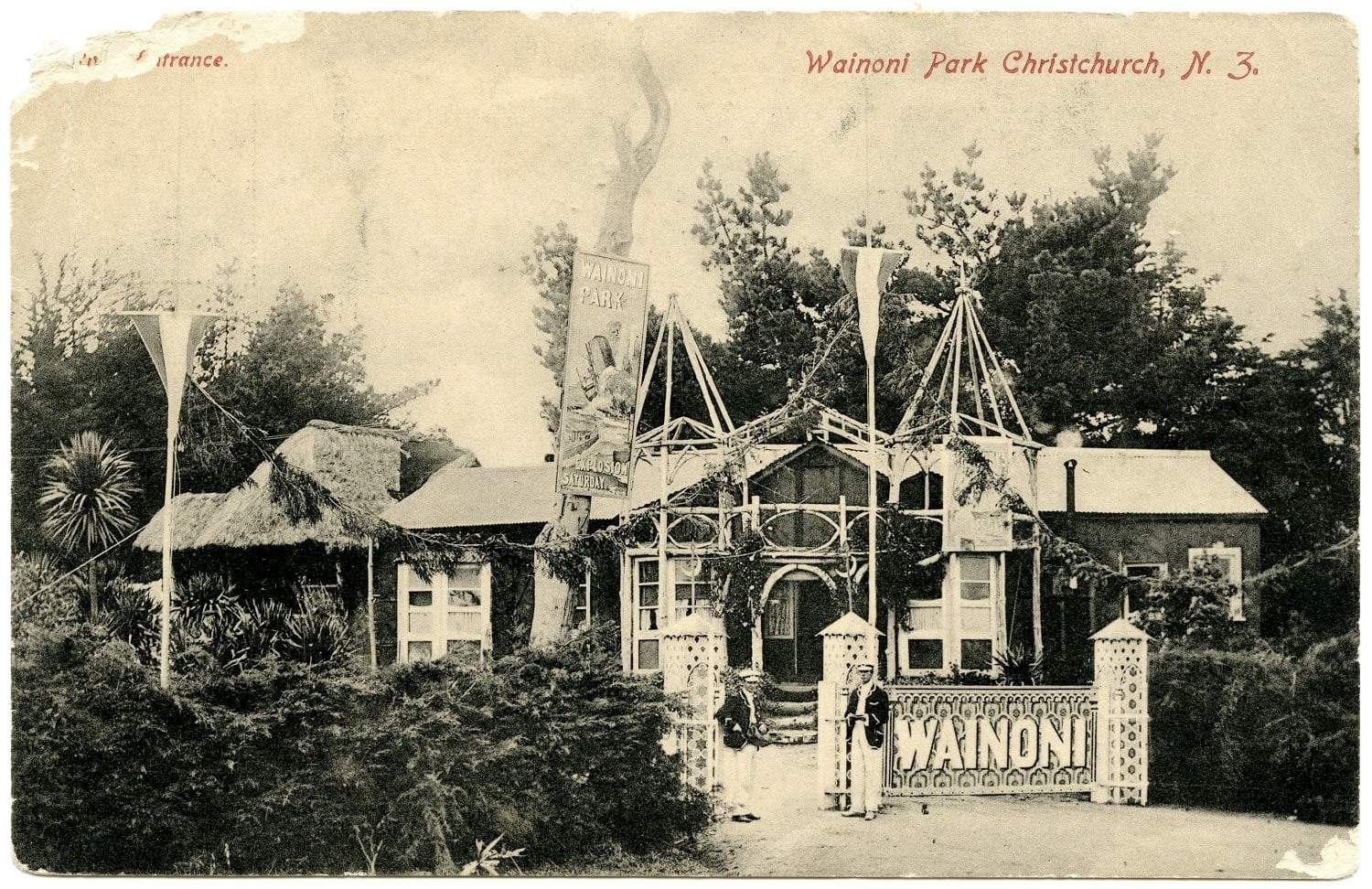If you’ve visited our exhibition Fur, Fangs and Feathers (on until 20 March!) you will have seen this lioness and her cubs. This feline family is one of the most popular displays in the exhibition.
Although we’ve grouped them together, the cubs and the lioness are actually not related and came to the Museum from very different sources.

The lioness is one of our oldest animal specimens. She was one of the many exotic animal skins acquired in the early days of the Museum by founding director Julius von Haast.
She was mounted by the Austrian taxidermist Andreas Reischek, who Haast hired in 1877 to prepare the large collection of skins he’d accumulated for display.

The three lion cubs came to the Museum several decades later, going on display in January 1912.
They’d been born in December 1911 to Lady, a lioness kept in the zoo at Wainoni Park, an amusement park run between 1903 and 1914 in eastern Christchurch.
The cubs were the first lions born in the South Island but tragically all three of them died within days. An article in the Lyttelton Times reported that their mother “was refusing to suckle the young”.

John Boyd, who ran the zoo at Wainoni, gave the dead cubs to the Museum and they were stuffed by taxidermist J H Haynes.
Not long after the deaths of the cubs, Boyd decided to move the Wainoni animals to another zoo he ran in Onēhunga, Auckland, and they departed in April 1912.

Lady, our cubs’ mother, was probably among the animals that went north.
Visitors to Wainoni Park could still see exotic animals there until it closed in 1914 and all the animals – including two bears, 22 monkeys and some wallabies and kangaroos – were sold.





